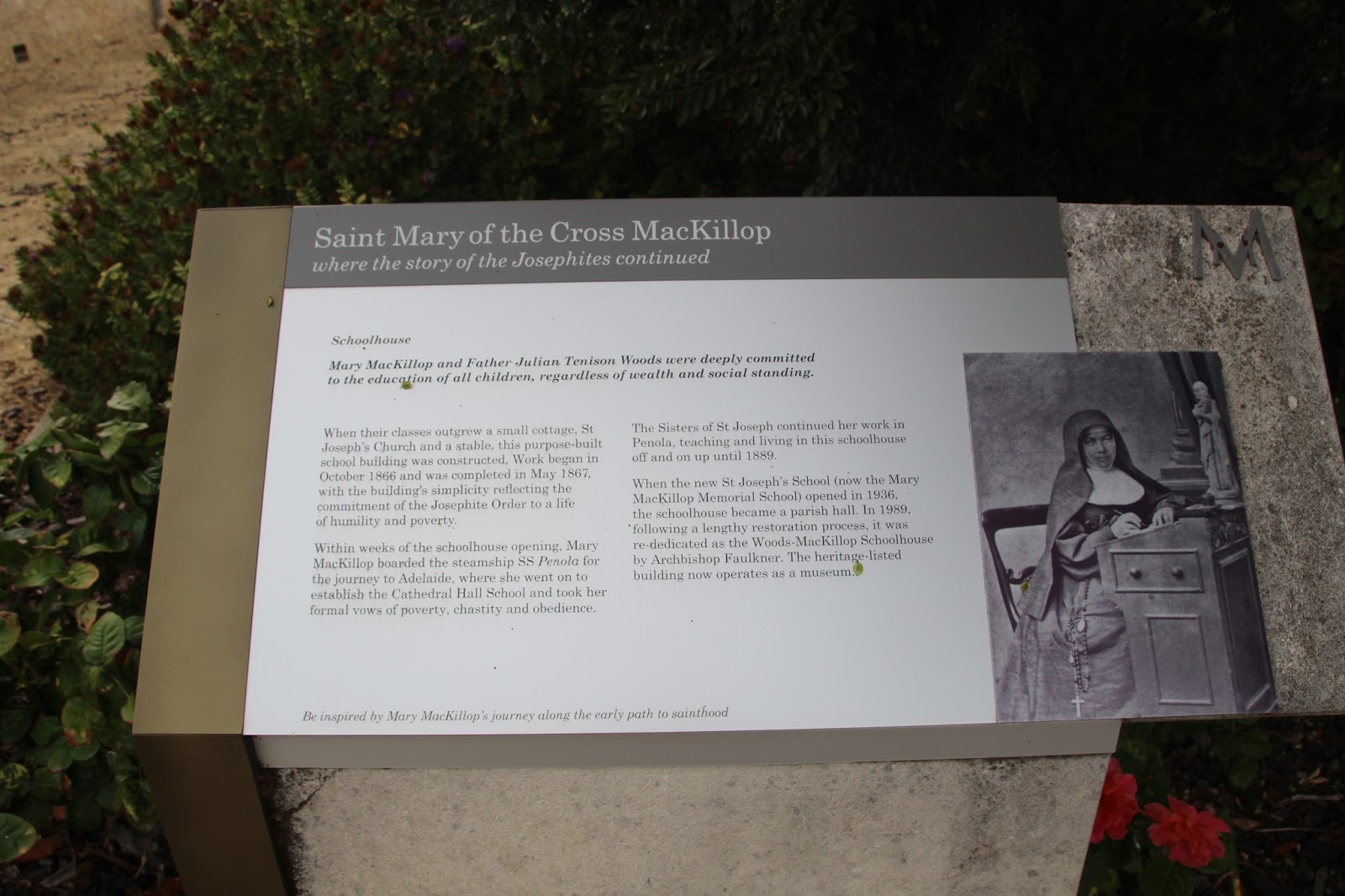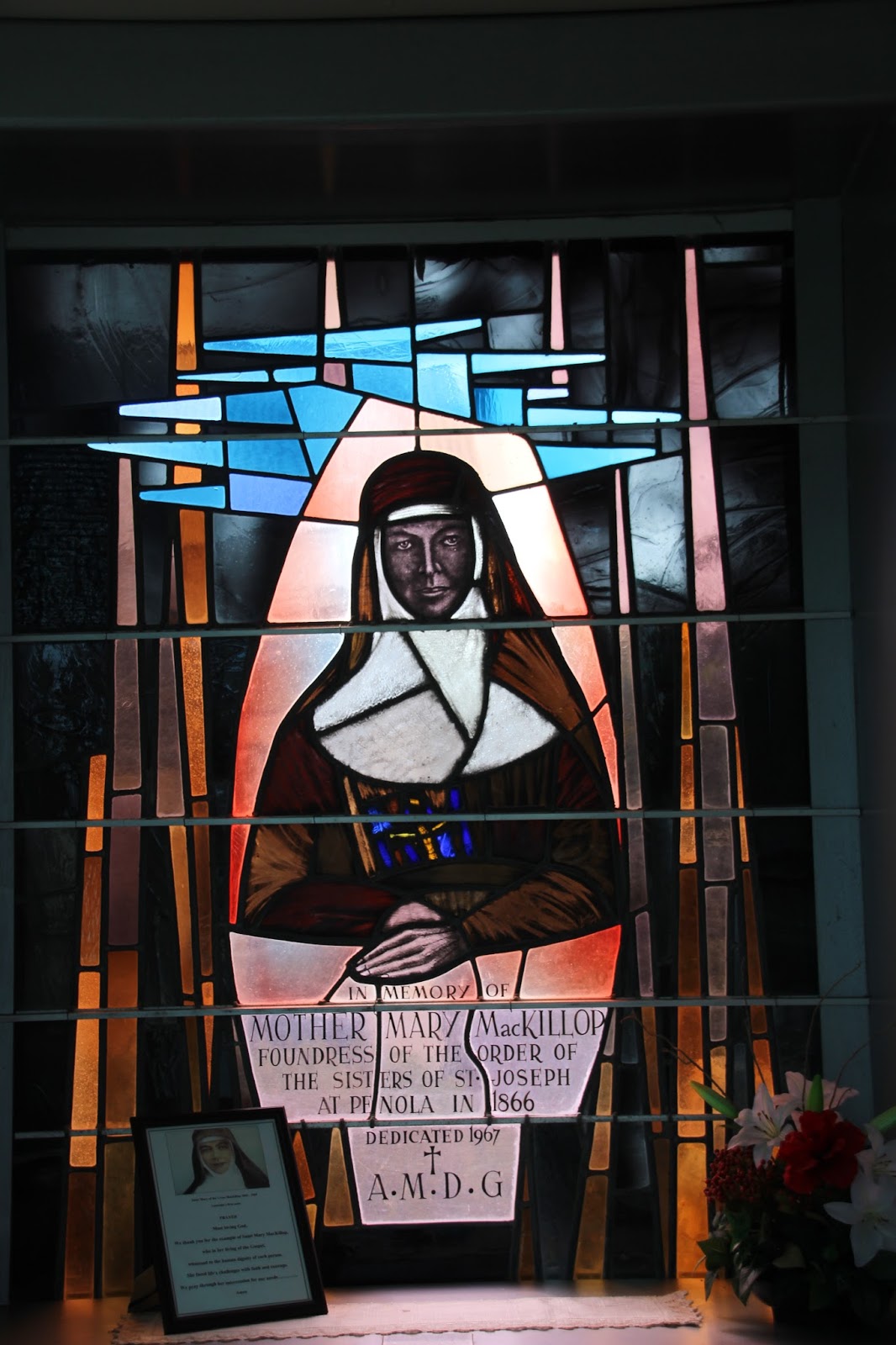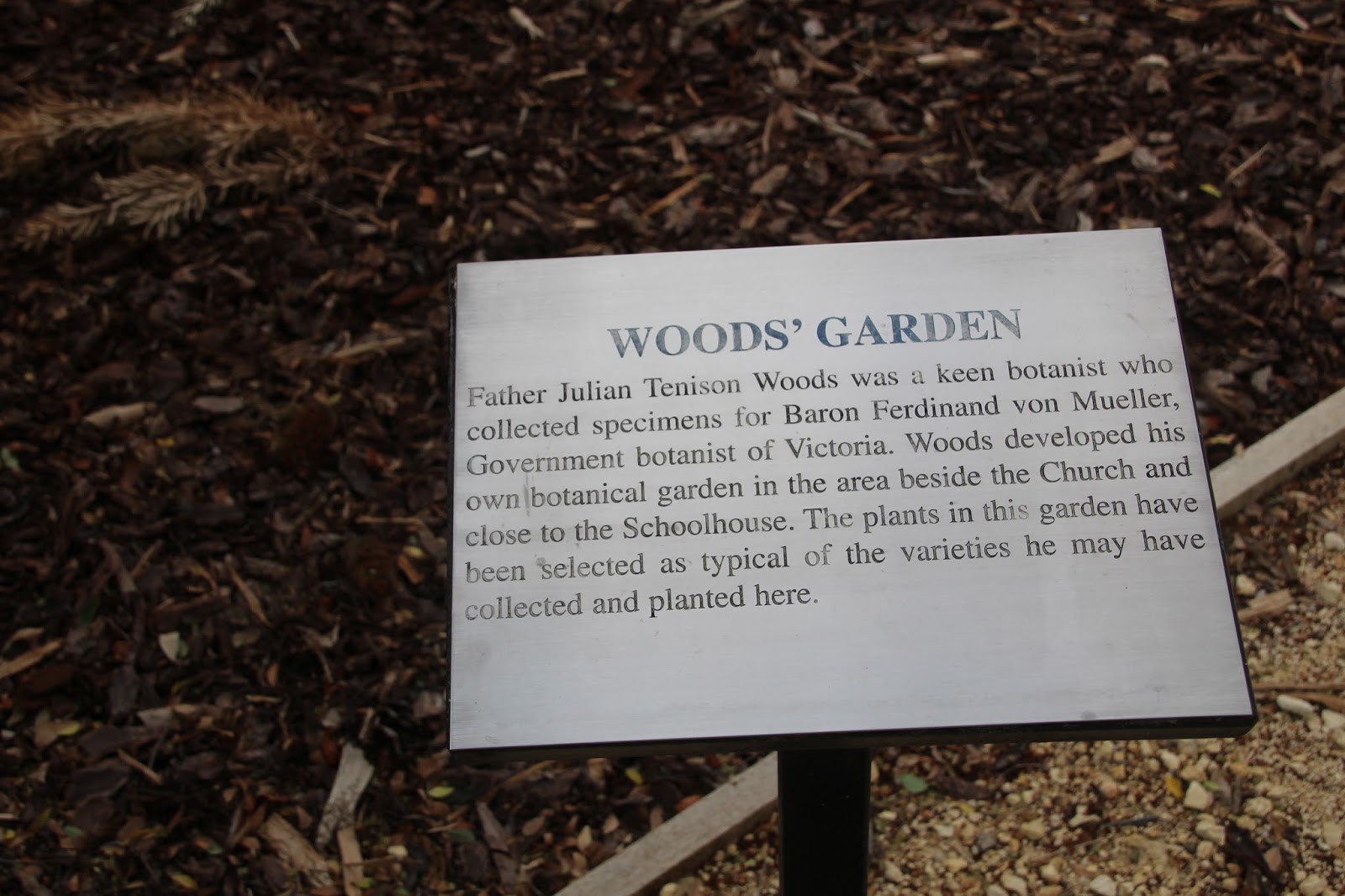Tom the backroads traveller hosts this weekly meme.
March 2015 - Penola Australia
On Day 18 in Australia we visited St.Joseph's Church in Penola.
Click on the link to see some more about Mary MacKillop.
Mary Helen MacKillop was born on 15 January 1842 in what is now the Melbourne suburb of Fitzroy, Victoria (at the time part of an area called Newtown in the then British colony of New South Wales) to Alexander MacKillop and Flora MacDonald. Although she continued to be known as "Mary", when she was baptised six weeks later she received the names Maria Ellen.
MacKillop's parents lived in Roybridge, Inverness-shire, Scotland, prior to emigrating to Australia.MacKillop visited the village in the 1870s where the local Catholic church, St Margaret's, now has a shrine to her.
Mary Helen MacKillop RSJ (15 January 1842 – 8 August 1909), now formally known as St Mary of the Cross MacKillop, was an Australian nun who has been declared a saint by the Catholic Church. Of Scottish descent, she was born in Melbourne, but was best known for her activities in South Australia. Together with the Reverend Julian Tenison Woods, she founded the Sisters of St Joseph of the Sacred Heart (the Josephites), a congregation of religious sisters that established a number of schools and welfare institutions throughout Australasia, with an emphasis on education for the rural poor.
With the process to have MacKillop declared a saint having begun in the 1920s, she was beatified in January 1995 by Pope John Paul II. Pope Benedict XVI prayed at her tomb during his visit to Sydney for World Youth Day 2008 and, in December 2009, approved the Catholic Church's recognition of a second miracle attributed to her intercession. She was canonised on 17 October 2010, during a public ceremony in St Peter's Square at the Vatican. She is the first and only Australian to be recognised by the Catholic Church as a saint.
Fr Woods had been very concerned about the lack of education and particularly Catholic education in South Australia. In 1866, he invited MacKillop and her sisters Annie and Lexie to come to Penola and to open a Catholic school. Woods was appointed director of education and became the founder, along with MacKillop, of a school they opened in a stable there. After renovations by their brother, the MacKillops started teaching more than 50 children. At this time MacKillop made a declaration of her dedication to God and began wearing black.
On 21 November 1866, the feast day of the Presentation of Mary, several other women joined MacKillop and her sisters. MacKillop adopted the religious name of Sister Mary of the Cross and she and Lexie began wearing simple religious habits. The small group began to call themselves the Sisters of St Joseph of the Sacred Heart and moved to a new house in Grote Street, Adelaide. There they founded a new school at the request of the bishop, Laurence Bonaventure Sheil OFM. Dedicated to the education of the children of the poor, it was the first religious institute to be founded by an Australian.
The "Rule of Life" developed by Woods and MacKillop for the community emphasized poverty, a dependence on divine providence, no ownership of personal belongings, faith that God would provide and willingness to go where needed. The "Rule of Life" was approved by Bishop Sheil. By the end of 1867, ten other women had joined the Josephites, who adopted a plain brown religious habit. Due to the colour of their attire and their name, the Josephite sisters became colloquially known as the "Brown Joeys".
On Day 18 in Australia we visited St.Joseph's Church in Penola.
Click on the link to see some more about Mary MacKillop.
Mary Helen MacKillop was born on 15 January 1842 in what is now the Melbourne suburb of Fitzroy, Victoria (at the time part of an area called Newtown in the then British colony of New South Wales) to Alexander MacKillop and Flora MacDonald. Although she continued to be known as "Mary", when she was baptised six weeks later she received the names Maria Ellen.
MacKillop's parents lived in Roybridge, Inverness-shire, Scotland, prior to emigrating to Australia.MacKillop visited the village in the 1870s where the local Catholic church, St Margaret's, now has a shrine to her.
Mary Helen MacKillop RSJ (15 January 1842 – 8 August 1909), now formally known as St Mary of the Cross MacKillop, was an Australian nun who has been declared a saint by the Catholic Church. Of Scottish descent, she was born in Melbourne, but was best known for her activities in South Australia. Together with the Reverend Julian Tenison Woods, she founded the Sisters of St Joseph of the Sacred Heart (the Josephites), a congregation of religious sisters that established a number of schools and welfare institutions throughout Australasia, with an emphasis on education for the rural poor.
Fr Woods had been very concerned about the lack of education and particularly Catholic education in South Australia. In 1866, he invited MacKillop and her sisters Annie and Lexie to come to Penola and to open a Catholic school. Woods was appointed director of education and became the founder, along with MacKillop, of a school they opened in a stable there. After renovations by their brother, the MacKillops started teaching more than 50 children. At this time MacKillop made a declaration of her dedication to God and began wearing black.
On 21 November 1866, the feast day of the Presentation of Mary, several other women joined MacKillop and her sisters. MacKillop adopted the religious name of Sister Mary of the Cross and she and Lexie began wearing simple religious habits. The small group began to call themselves the Sisters of St Joseph of the Sacred Heart and moved to a new house in Grote Street, Adelaide. There they founded a new school at the request of the bishop, Laurence Bonaventure Sheil OFM. Dedicated to the education of the children of the poor, it was the first religious institute to be founded by an Australian.
The "Rule of Life" developed by Woods and MacKillop for the community emphasized poverty, a dependence on divine providence, no ownership of personal belongings, faith that God would provide and willingness to go where needed. The "Rule of Life" was approved by Bishop Sheil. By the end of 1867, ten other women had joined the Josephites, who adopted a plain brown religious habit. Due to the colour of their attire and their name, the Josephite sisters became colloquially known as the "Brown Joeys".










It would seem she made a huge impact.
ReplyDeleteShe sounds like quite a woman. Thanks for sharing part of her story...
ReplyDeleteMother Mary MacKillop was a big part of our Catholic religious heritage in New Zealand as well. Nice to see some more info about her - and with pictures.
ReplyDeleteDiana
A beautiful church, and a fascinating history!
ReplyDeleteGreat history. Jucy condo, what a hoot! Tom The Backroads Traveller
ReplyDeletevery cool. such history. ( :
ReplyDeletei love your header shot ... the hubby & i see folks with those campers all the time. they are so funny... usually have such silly messages or quotes on the van very cool. fancy.
Really interesting post! Lots of fascinating information about this woman and the order she founded!
ReplyDeleteGood post! Info from your travels.
ReplyDelete...another inspiring woman.
ReplyDeleteNever know about that Saint. Very nice church you showed
ReplyDeleteThat stained glass is spectacular
ReplyDeleteI learned a bit about this saint in the last few weeks so this is a timely post!
ReplyDeleteThanks for sharing at https://image-in-ing.blogspot.com/2022/08/a-visit-to-cedar-creek-galleries.html
ReplyDeleteThanks for sharing your link at My Corner of the World this week!